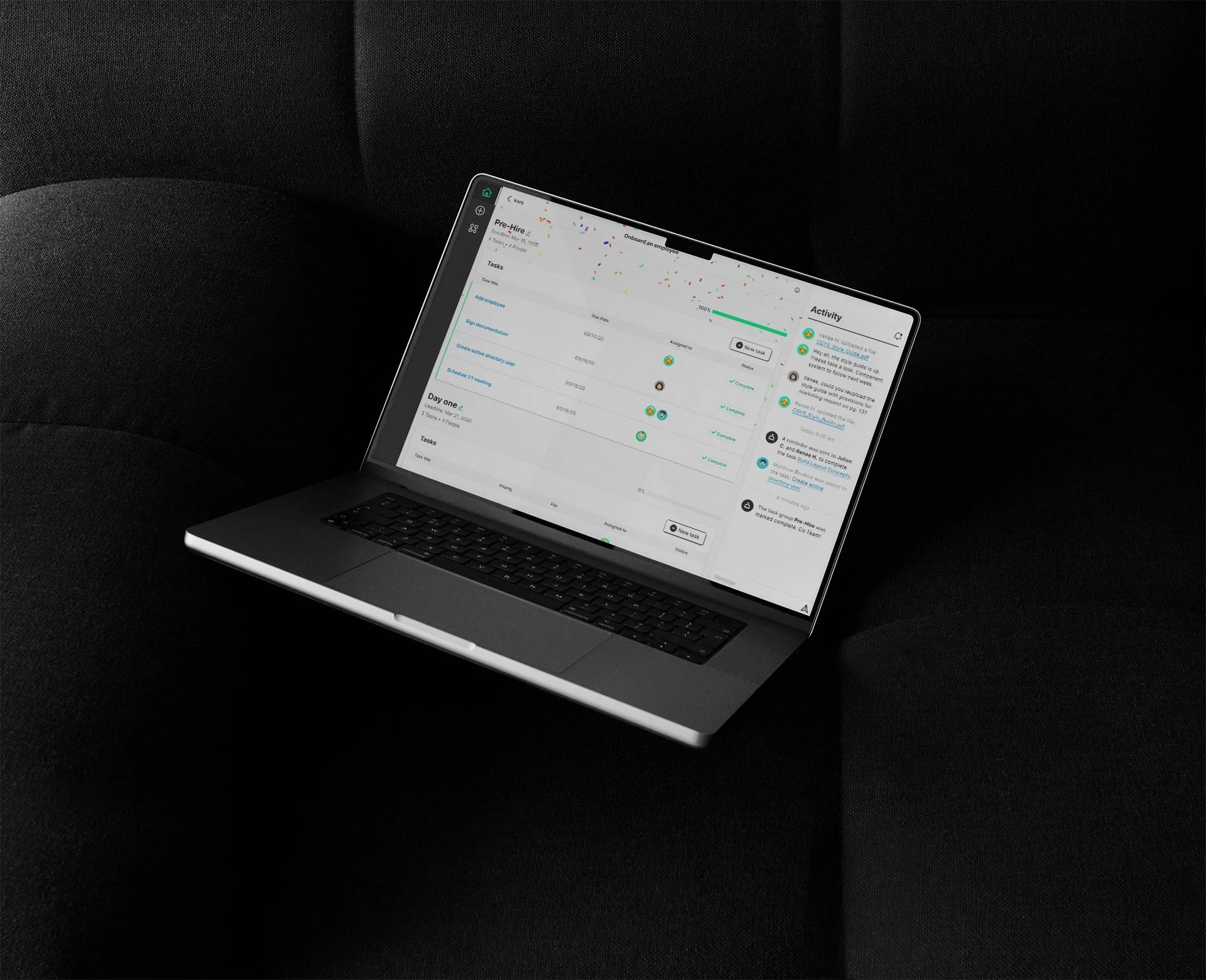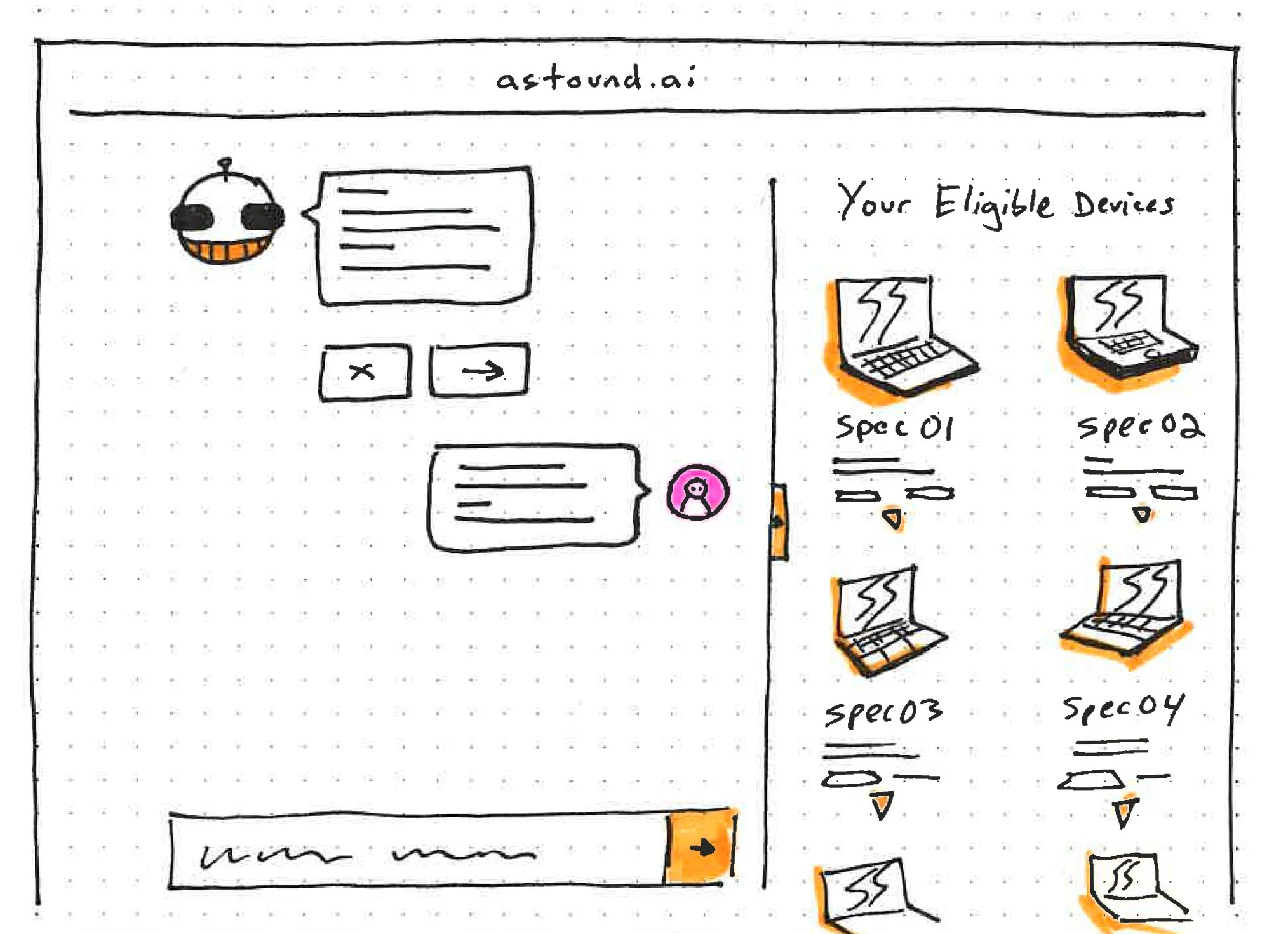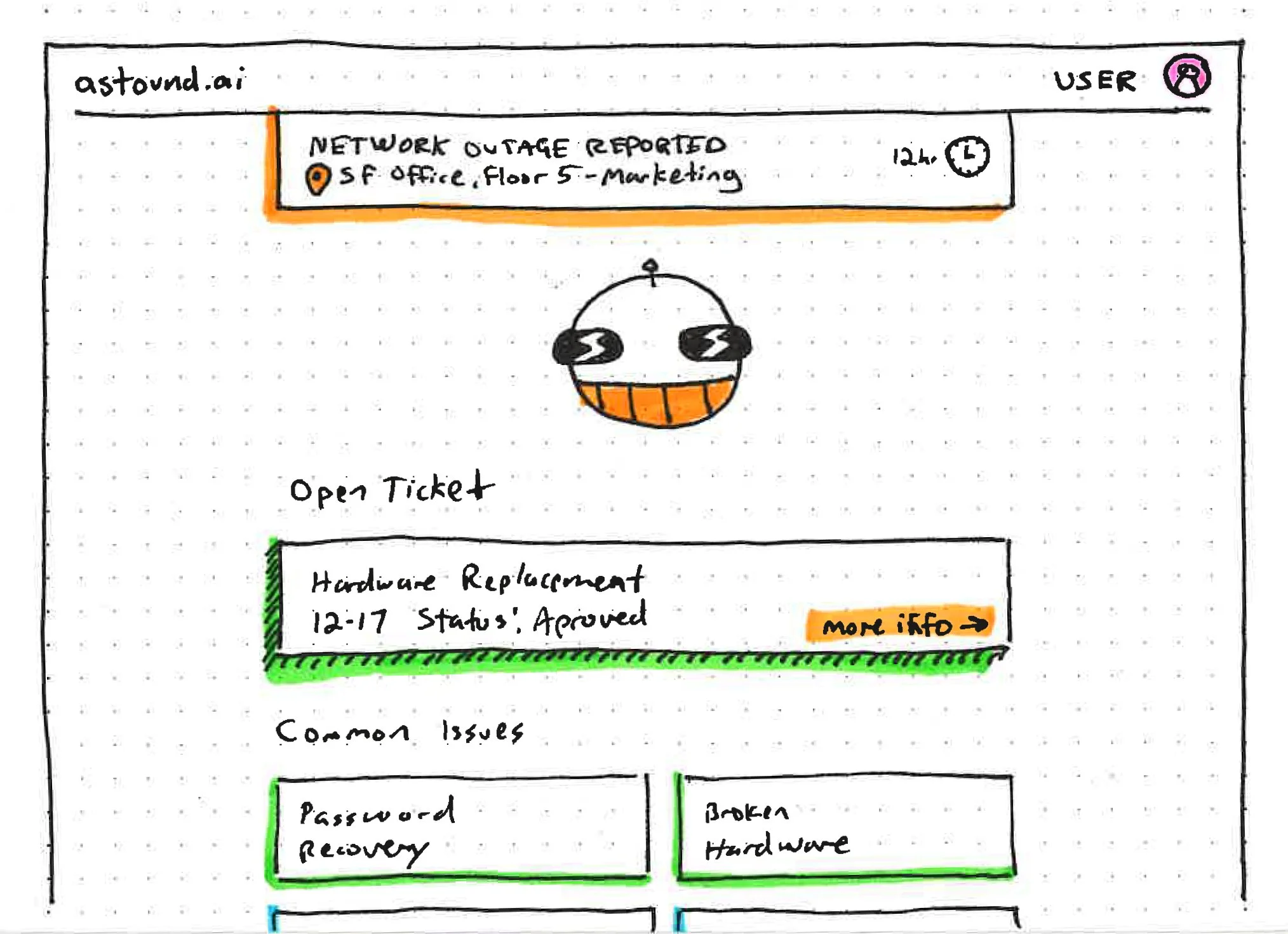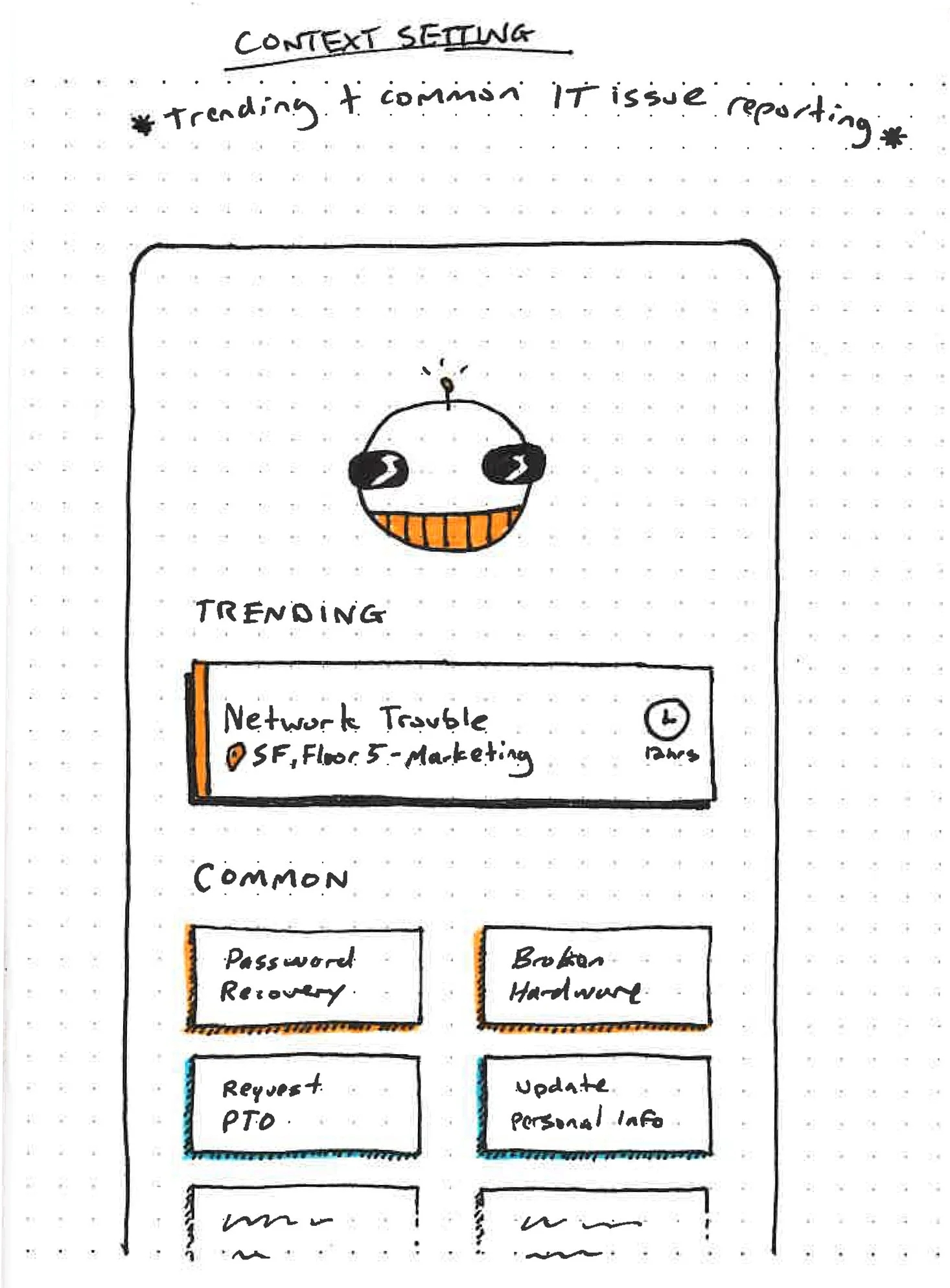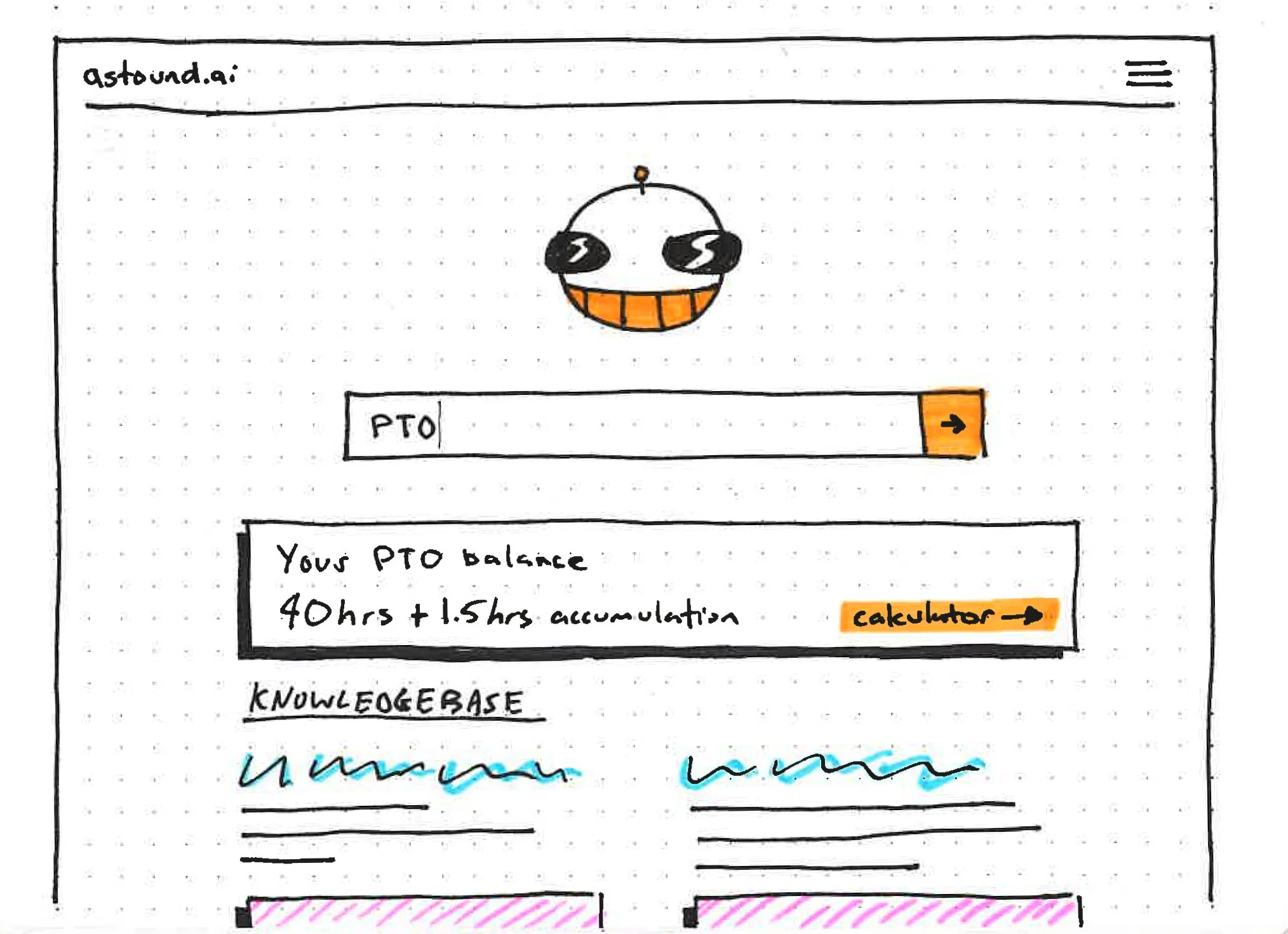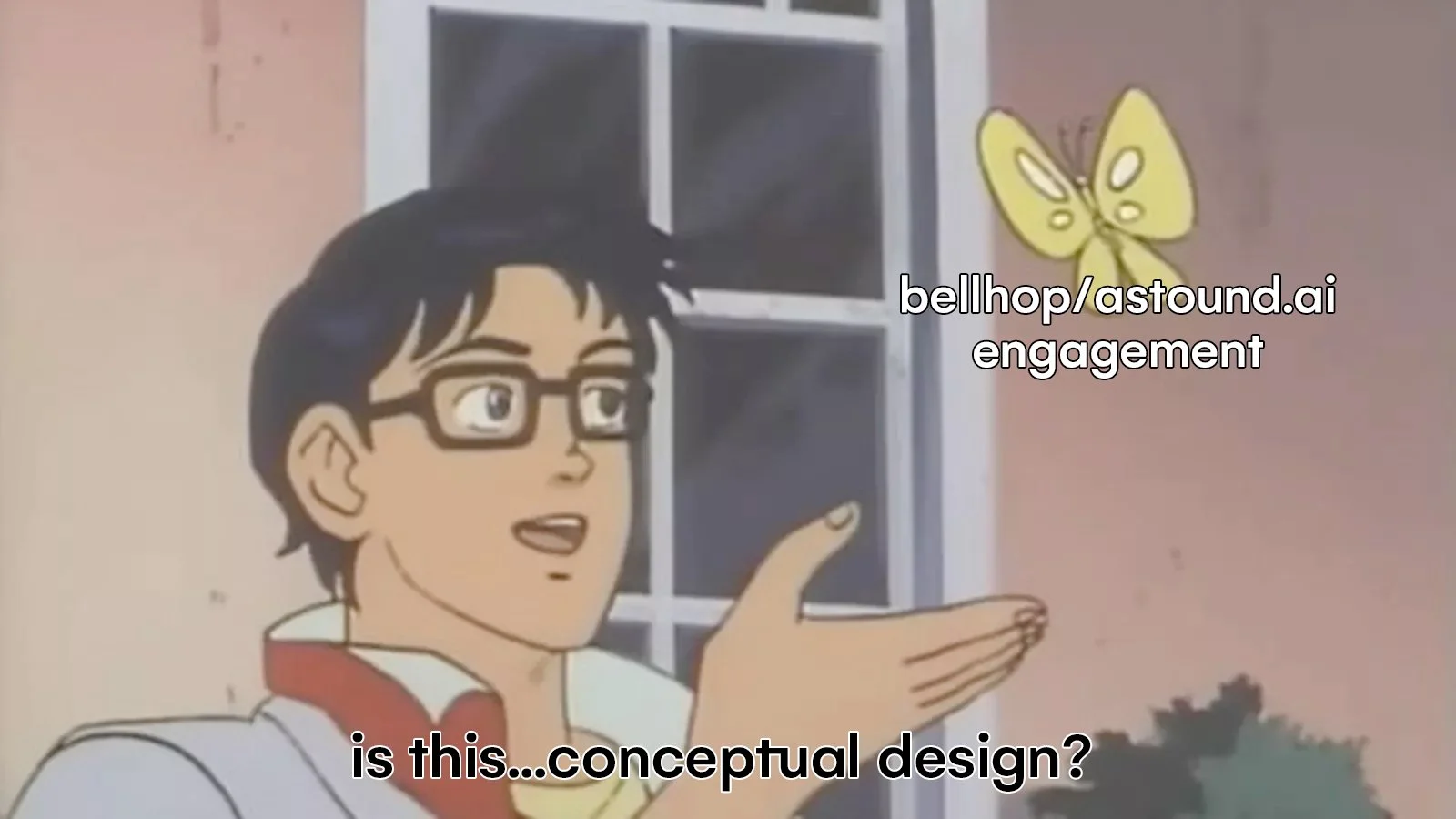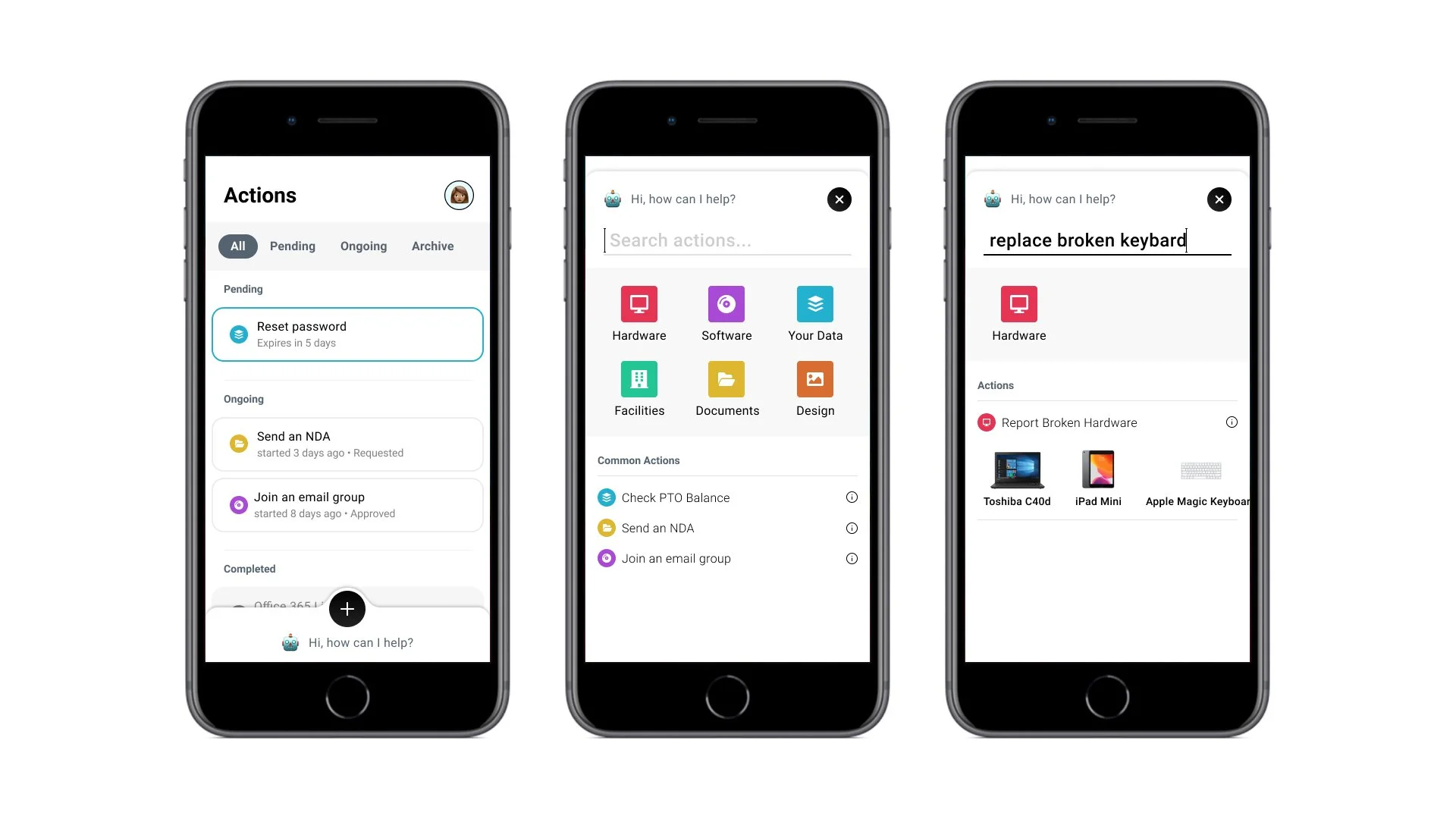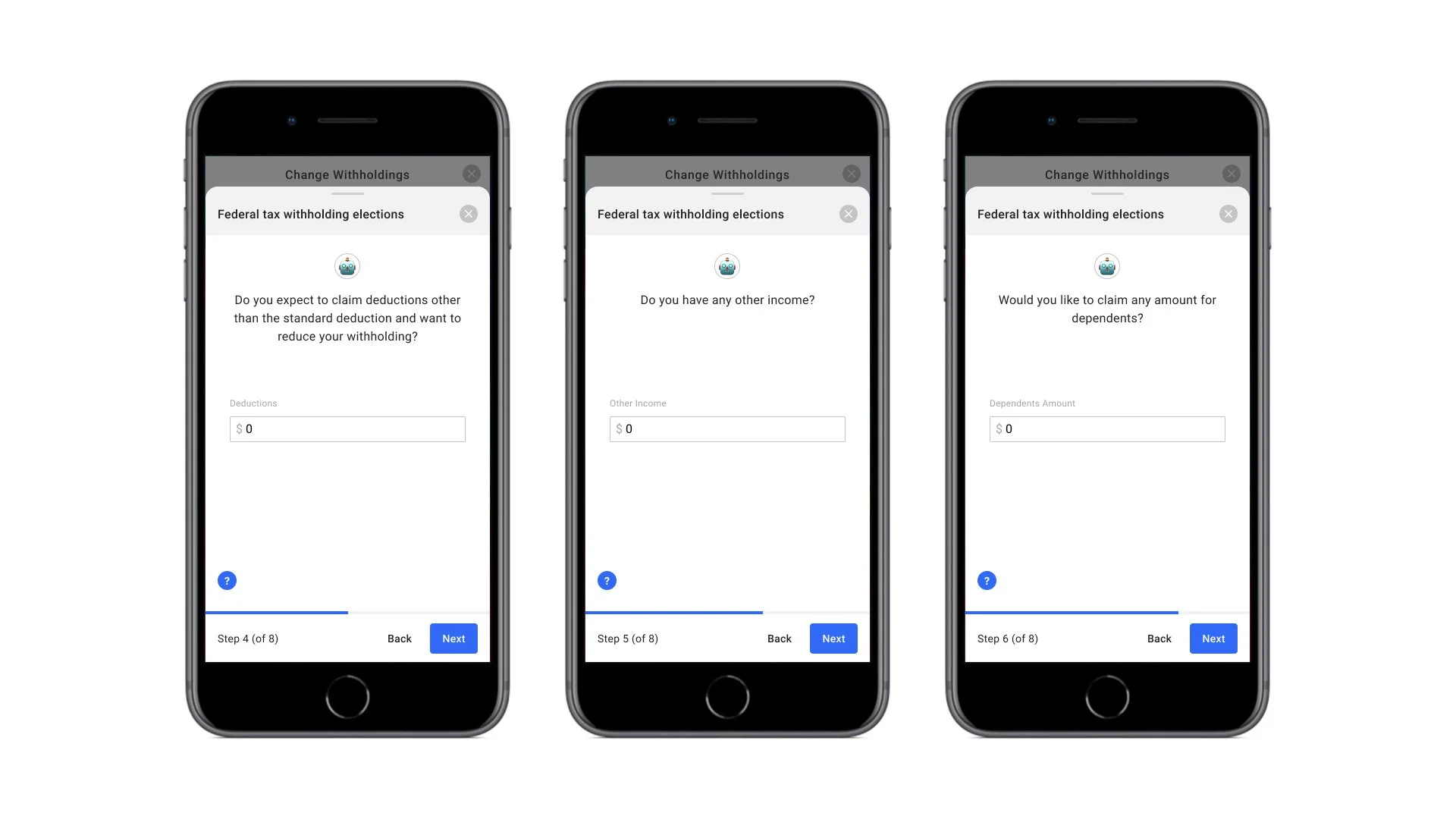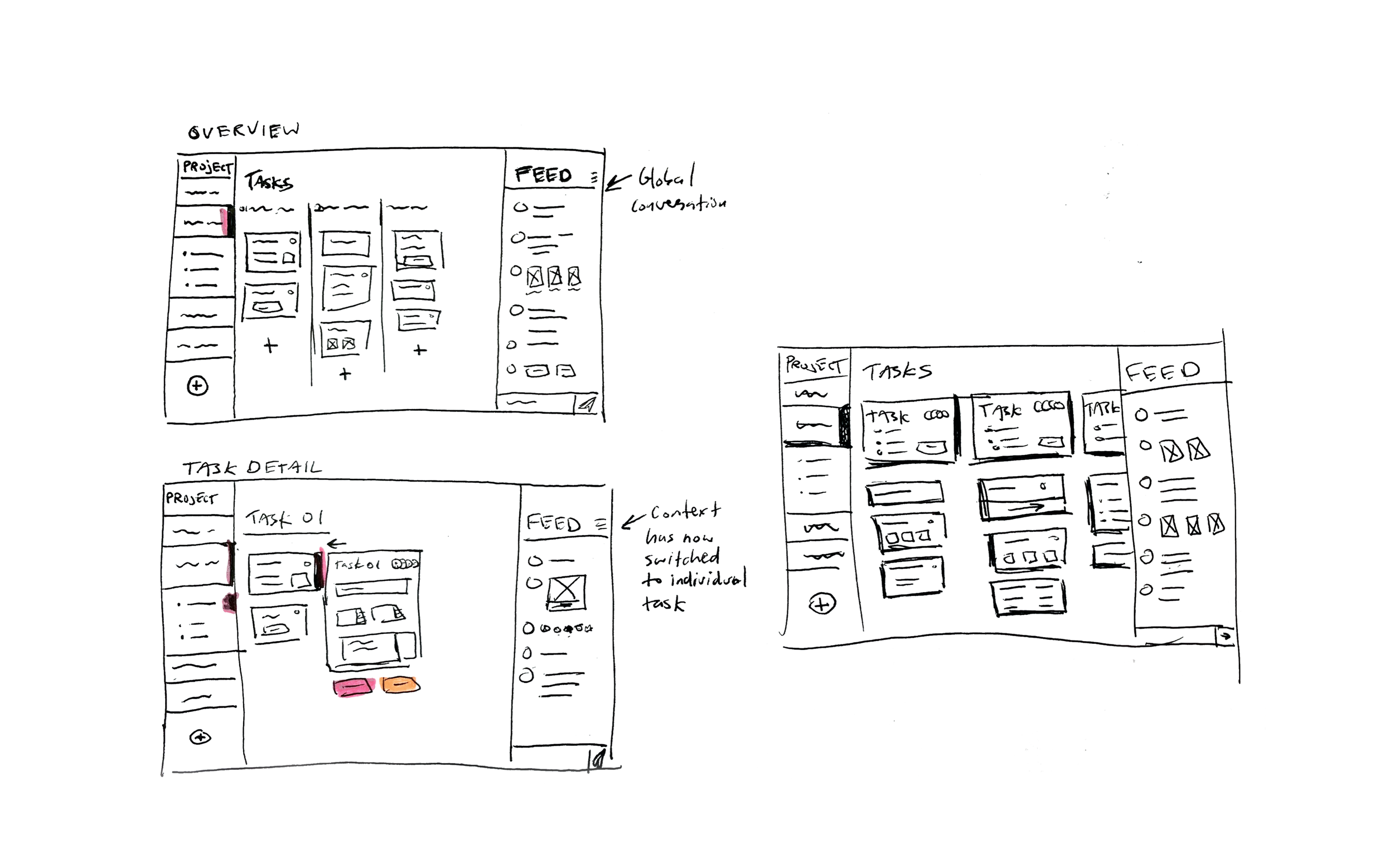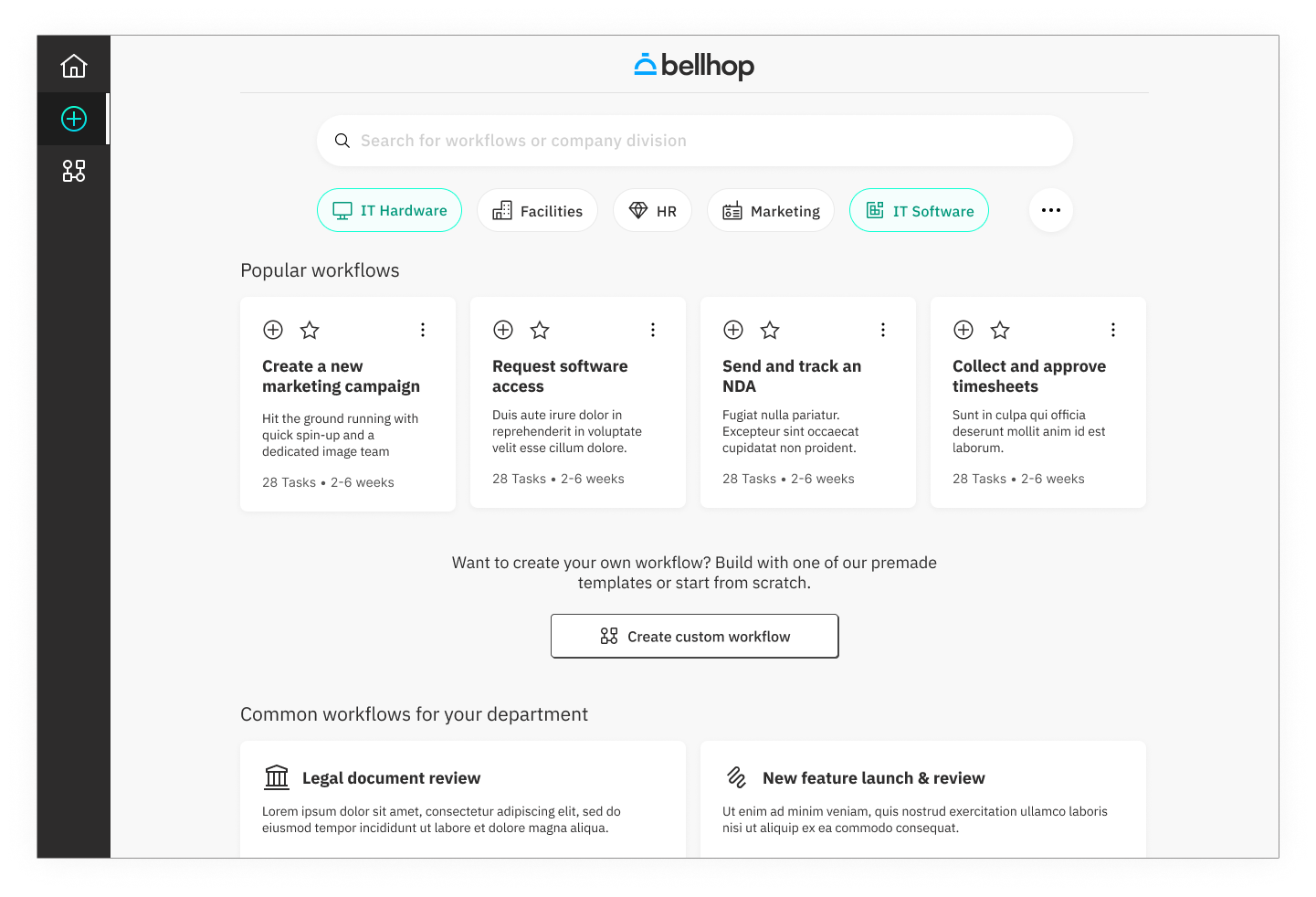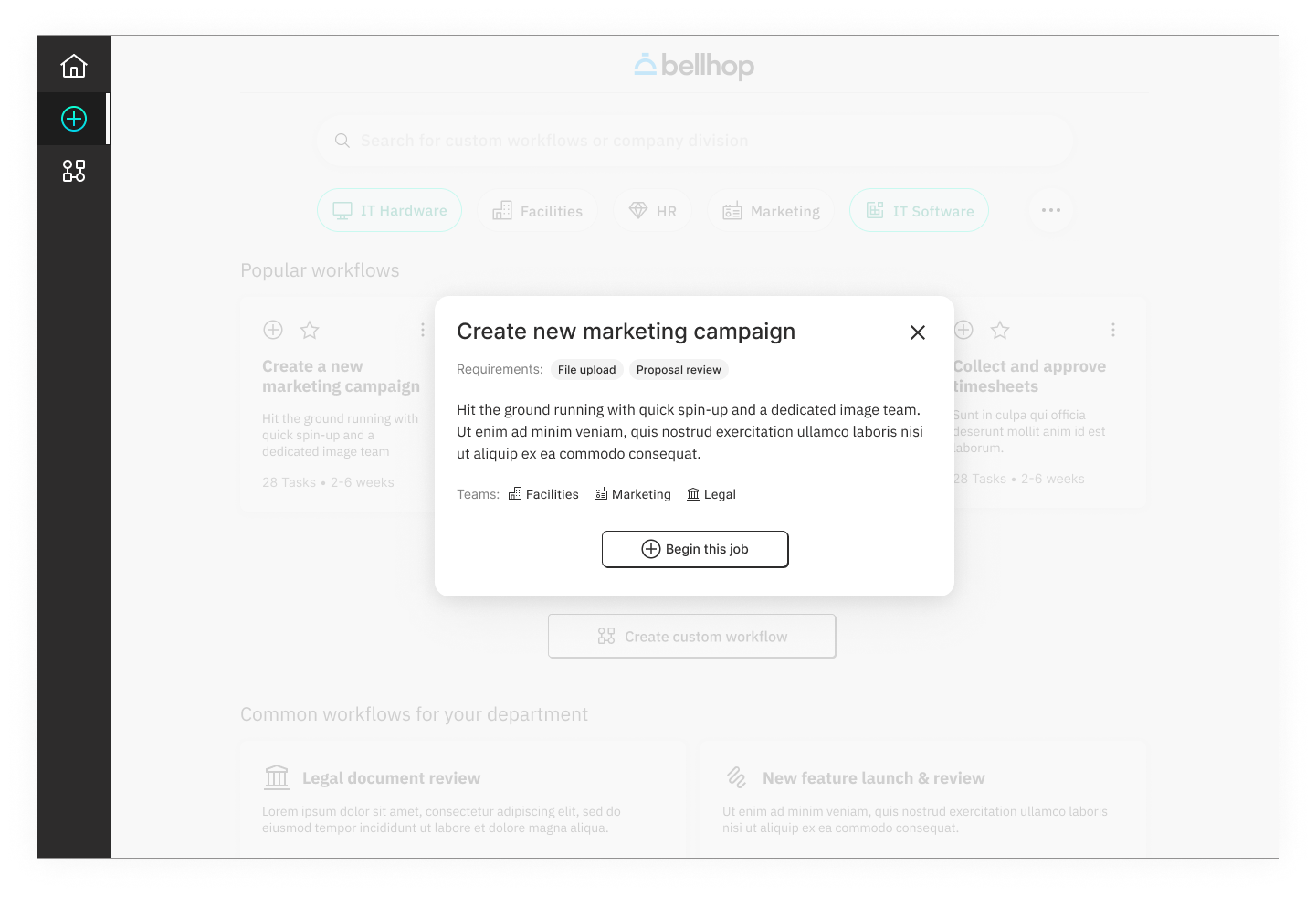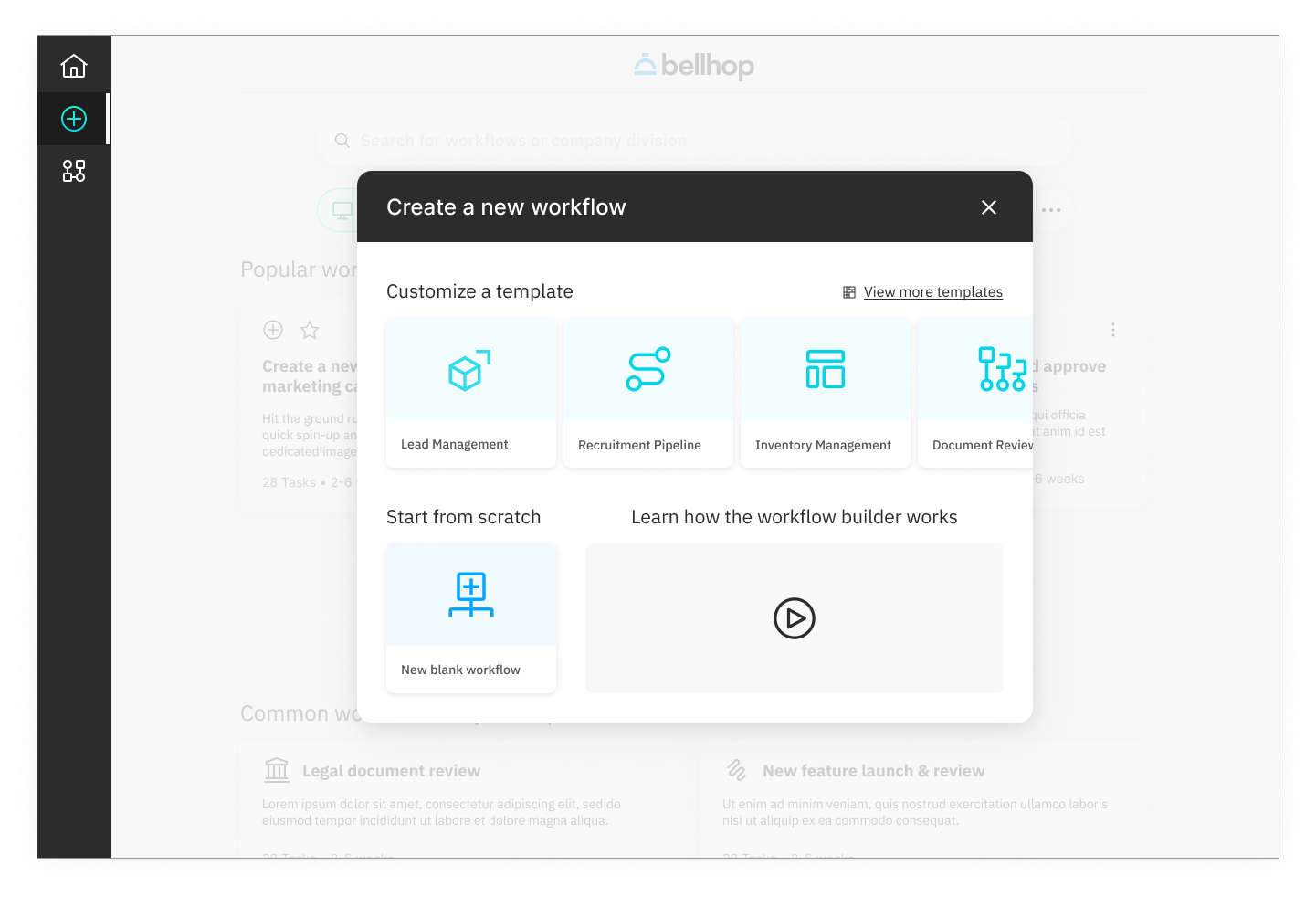Bellhop
The Project
The Bellhop product started as a way to resolve HR and IT issues, thru a user-friendly and engaging employee interface. The brief: Build a product that is fast, easy-to-use, and actually solves employee problems. Where it ended? Well you’ll just have to read-on to find out.
My Role
Lead Designer
Year
2020
Duration
8 Weeks
Astound.ai offers an AI platform that leverages machine learning, natural language processing, and predictive analytics to automate many internal businesses processes and workflows. The company contacted us to help restructure and reposition their AI and NLP framework.
The Client
Evolution of an AI assistant
Project Goals
To build a high fit-and-finish prototype backed by a conceptual model that showcases the preferred state of the user experience for Astound.
Focus on the highest value use-cases for Employee users
Prototype used to uncover user insights
An artifact to demo with enterprise customers
Provides an inspirational north-star for the future direction of the product
Phase 1
Discovery
Discovery tl;dr
Refresh cycles are long, integrate with established software and services
Enterprise companies typically have systems that automate tasks between third-party systems. Astound wants to have a product that spans all of these systems to be the "digital twin" of the employee.
NLP (Natural Language Processing) alone is a hard problem with compounding difficulty. AI is the value, not the UI
Moveworks has done some things right, but it is not as advanced as it would seem and requires high-touch integration to setup the automated actions. The ongoing maintenance of these integrations is where the true cost lies.
There is uncertainty in whether to meet users in the tools they already use or create something new
Integrating into existing communications platforms is viewed as a limitation. These platforms are often very opinionated on how to build integrations. Astound does not wish to be blocked on building the experience they want.
Competitive Audit
Service Now
+ Huge ecosystem of connected capabilities, single system of record,
- Large system can feel overwhelming, complicated mobile experience
Interaction models: Conversational AI, Virtual Agent, Touch interface reporting, Dashboard management
Platform Centric: These solutions are structured to take advantage of service level upgrades within a core system. There are Machine Learning features within a broader ecosystem, but they may not be the primary focus or present at all.
Moveworks
+ Immediate responses, transparent problem solving, familiar featured snippets, minimal configuration
- Low discovery of potential activities, limited contextual/semantic interfaces
Interaction models: Conversational AI, Semantic Search
AI Centric: Creating meaning from data to solve a problem. An AI centric approach takes the core capabilities of Machine Learning and applies it to the enterprise problem space. The platform is flexible and unique to other more widespread products.
Frameworks Compared
-
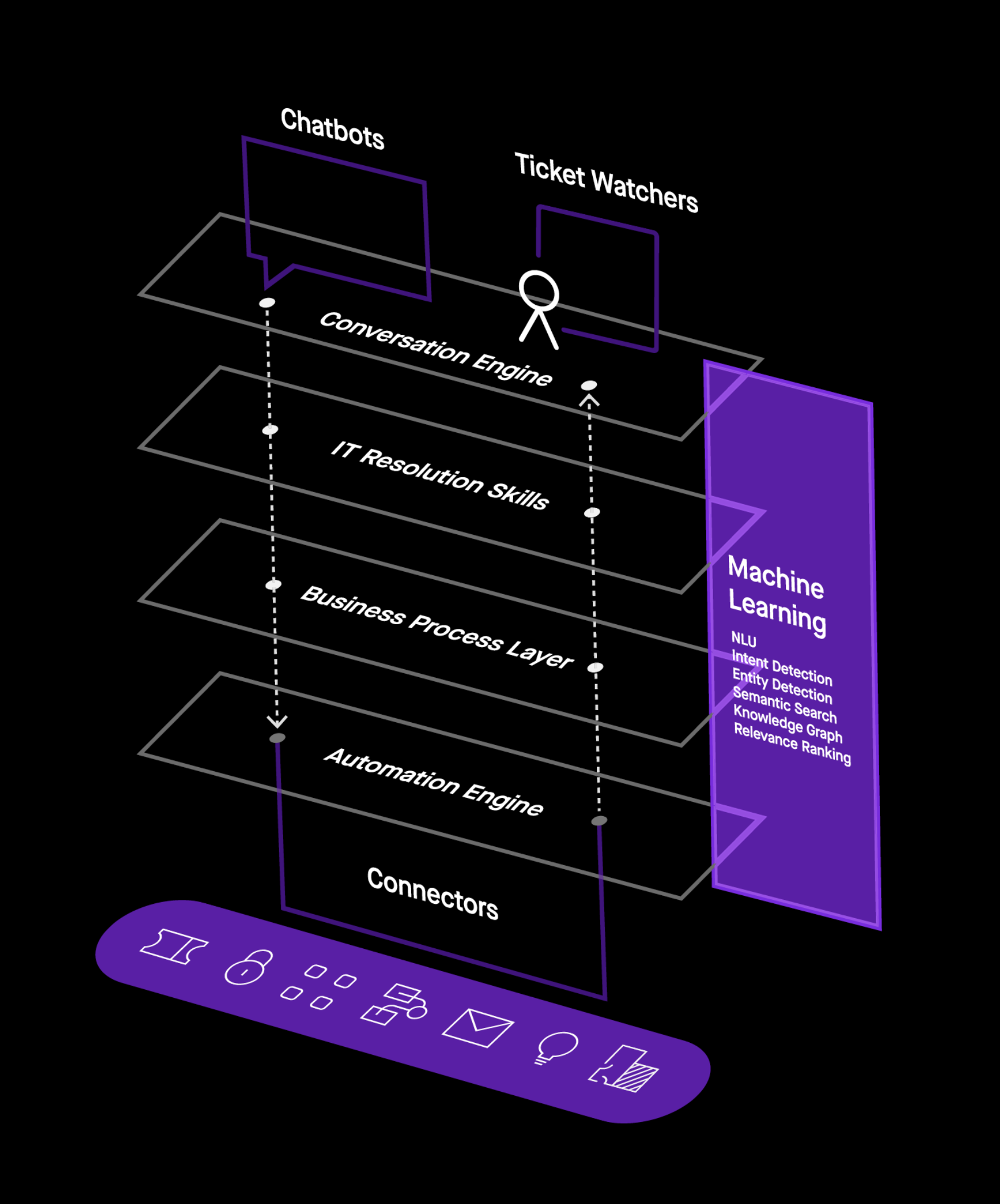
Competitor Framework
-

Existing Astound Framework
-

Astound Framework 2.0
Result from workshop discussions comparing existing frameworks. This universal northstar is less reactive with deeper integration and access to systems of record.
Co-design: User Scenarios
A workshop exercise meant to align our understanding of the product with the client’s perspective of their users and model assumptive behaviors for validation.
Informed Ideation
The user scenarios served as the backbone for exploring use-cases, interaction models, and initial concepts before testing with real people.
Which netted 5 potential
Use-Cases
Auto–Resolution
This allows employees to complete common repetitive tasks without involving another person. It requires deep integration with existing systems for things like provisioning software, managing email aliases or groups, and allowing WiFi access.
Proactively Notifying User
Being deeply integrated into systems allows us to keep tabs on what is happening, when an employee needs to be notified, or when we can proactively take actions on the users behalf.
Start & Monitor a Process
These might be more complex issues like provisioning a laptop for a contractor or adding dependents to a health insurance plan. This would allow manual tasks and processes to continue while keeping an employee in the loop.
Answering a Question
Involve obtaining information from a system of record or company knowledge base. This is potentially very easy (simple data points like PTO balance) or very hard (pulling relevant information from deep in a knowledge base article).
Collaborate With Live Agent
A human agent will be better equipped to help an employee work through software issues or take more specific actions. The system could still take actions or provide information to the live agent or employee.
…And some early experience model considerations
Modality
It doesn’t have to be a chat window where we talk to software pretending to be human. What other ways could users interact with Astound?
Personality
Experiences like this live or die on their personality: too familiar, nobody will take it seriously. Too cold, and there’s no delight.
Surfacing
Astound can vary between totally invisible (seamlessly integrated into another endpoint) to totally opaque (Astound is the only way to make HR/IT-SM requests).
Initial Conceptual Direction
All concepts were focused on achieving similar results:
Employee self-service to accomplish IT and HR tasks.
A proactive assistant to resolve issues and provide information.
Which were distilled into three experience models:
Chat
Search
Menu Driven
EXPERIENCE MODELS
EXPERIENCE MODELS
Gut Checking Wireframes - Pre Testing
Chat
Search
Menu Driven
Realization
It became obvious very quickly that chat alone was simply far too cumbersome in all but the simplest of scenarios.
Solution
But these assumptions, as confident as they were, were still assumptions. So we test.

Preparing for User Research
-
An assistant operations manager in logistics, a product marketing specialist for an HR software company, a sourcing specialist and an accountant in healthcare, and a director of information technology for a real estate website.
-
45-minute session. Generative interview questions and user testing concepts.
-
Three wireframe concepts in clickable prototypes. These flows gravitated towards various search-based and conversational interfaces. Combined finding information and completing tasks, like requesting time off.
Concept 01 Wires
Favors results over accuracy
Is more resilient when incorrect — preventing frustration
Type-ahead search reveals functionality + real-time information
Concept 02 Wires
Applies transparent “Hubs” + categories to reduce the effort of navigating links
Adds a simple “dashboard” for return visits
Concept 03 Wires
Three distinct paths to help orient employees and limit results
Type-ahead injects more of the assistant’s personality
Can follow requests and open tickets from “dashboard”
Widening Our Focus
What we heard: Most liked the idea of consolidating information from disparate systems and making it clear and accessible, but employees just don’t make these kinds of requests that often
More teams and departments offer services beyond just IT and HR
We should facilitate that collaboration and help manage longer processes and workflows
Phase 2
Rapid Iteration
Getting Into The Weeds
Our next concepts broadened the use cases and explored how to maintain the personality of the assistant while resolving longer, more complex processes.
Mockflow 01 — App & Chat
Mockflow 02 — List & Launcher
Home, Launcher, & Detail
As concepts began to solidify, so did the key interaction path areas: home, process launcher, and action detail page.
Home was for managing your work and understanding what was going on.
Process Launcher was for discovering and starting new processes.
Action Detail, where interactions took place; a hybrid chat-directed experience.
We used more and more use cases to vet their usefulness.
Action Detail Stress Testing
We explored the action detail page in more …well detail. We fleshed out how to handle gathering information in forms, longer flows, and multiple processes in the same conversation.
-
Forms
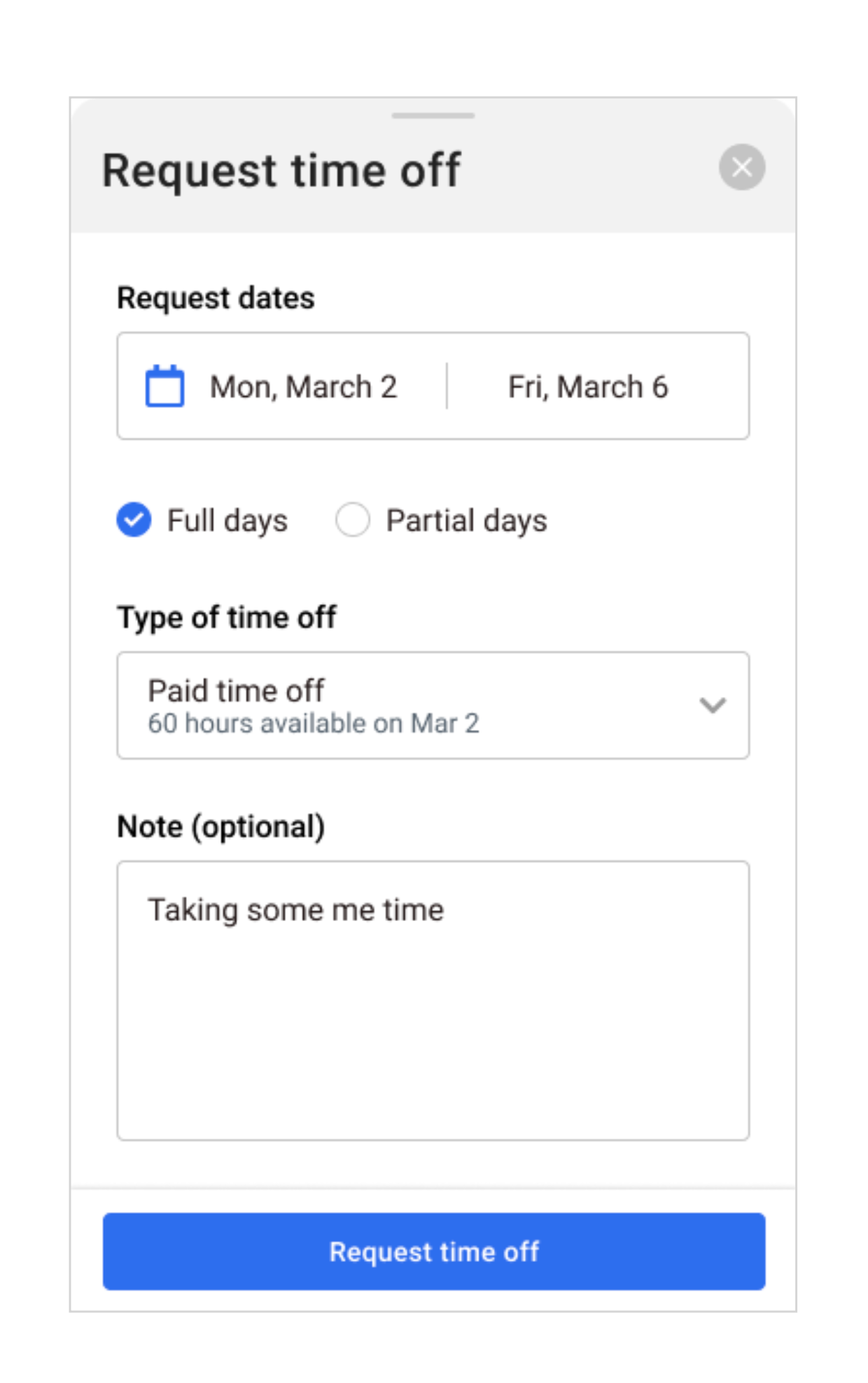
-
Flows

-
Multiple Processes
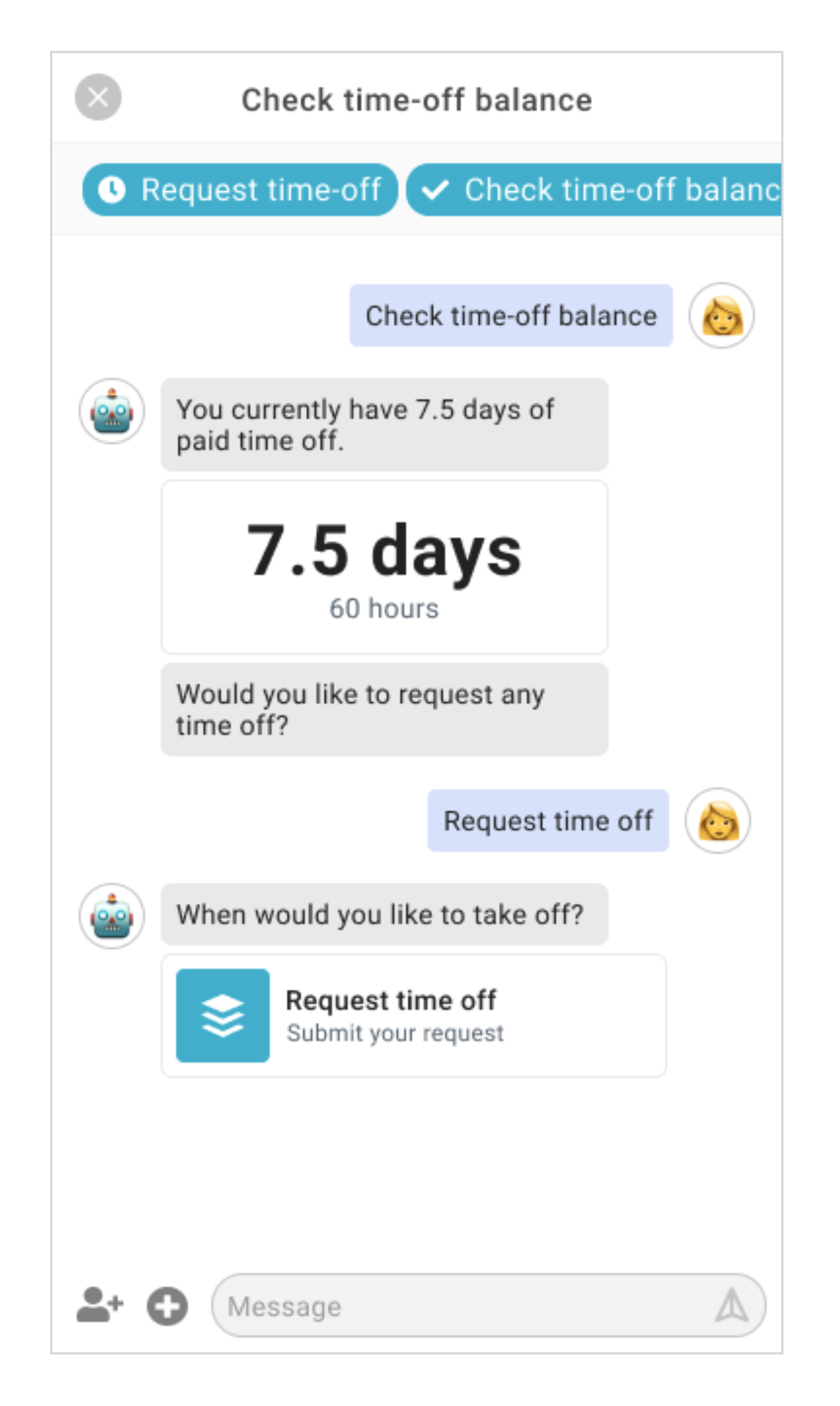
To add fit and finish, we began refining the visual style of these concepts.
Light Mode
Dark Mode
Conversations Crumble
As we expanded use cases, it became clear that collaboration in a thread becomes harder when complexity (adding people and tasks) increases. Who's responsible for what? How do you manage the workflow? Who's accountable?
We needed more layers of management to achieve collaborative workflows. Conversations alone were not enough.
Don't just manage work, do work.
~
Don't just manage work, do work. ~
Phase 3
Enter Bellhop
A New Direction
Bellhop is about tracking all your ongoing workflows that involve humans or systems (yes, everything) in the enterprise. Bellhop distinguishes itself from other task management tools by being aware of workflow activity. If an integrated system changes, it tracks that change and can make people aware of it. It also can take action through routing or resolution when it knows enough to do so.
That NEU New Conceptual Model
In Bellhop, a user can create a job based on a workflow.
Jobs are a series of tasks that achieve a goal.
Tasks can be organized into groups, assigned to users, and have due dates. The essential part of a task is the action.
An action allows a user to enter data, see important information, or act on an outside system. For example, users could create a new lead in Salesforce, schedule a meeting, or see information from a previous task.
Final Prototype
Workflow Builder
We also shed some light on potential customizations like utilizing a saved or curated workflow specific to your organization, or creating new workflows either from scratch or template.
Oh and just enough time to work a few screens into mobile.
Takeaways
Users!
There were many changes to the Bellhop model both from internal and external forces. We prioritized helping the client explore these models and in turn, lost out on valuable user-feedback. We directed them to first and foremost, continue testing the new concepts with real people.
Focus on one great thing
We spent a lot of this engagement thinking about use cases that can stretch or test the model, but refocusing on doing one thing really well is where we would have liked to spend our time.
Don’t lose track of automation
The “AI” part is old news. The real value and user adoption will come when it does more than just keep track of actions. We need to find the ways to make things happen for people.
Don’t forget about invisible work
Easily setting up workflows, adding tasks, and configuring integrations will be critical to a good user experience.
